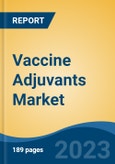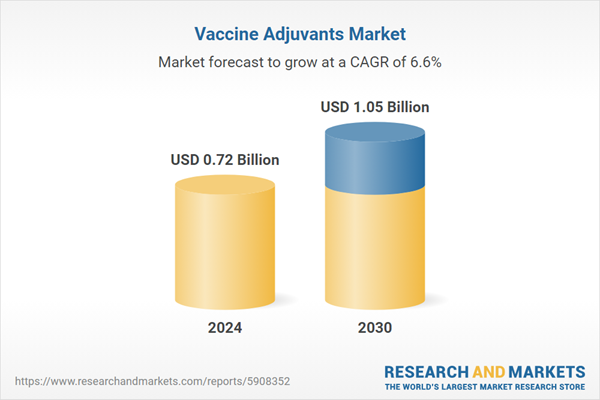Speak directly to the analyst to clarify any post sales queries you may have.
10% Free customizationThis report comes with 10% free customization, enabling you to add data that meets your specific business needs.
Key Market Drivers
Rising Infectious Disease Threats
The Global Vaccine Adjuvants Market is experiencing a notable upswing, and one of the primary driving forces behind this growth is the persistent and escalating threat posed by infectious diseases. In recent years, the world has witnessed a series of infectious disease outbreaks and pandemics that have underscored the critical importance of vaccination and vaccine adjuvants in safeguarding public health. These threats have led to a surge in demand for adjuvants, which play a pivotal role in enhancing the efficacy of vaccines and ensuring rapid and robust immune responses. For instance, according to the World Health Organization, infectious diseases are responsible for over 17 million deaths annually. Over the past two decades, 30 new infectious diseases have emerged, posing significant global health challenges and highlighting the urgent need for innovative prevention, treatment, and surveillance strategies.Key Market Challenges
Regulatory Hurdles
One of the most formidable challenges for vaccine adjuvants is the arduous journey through the regulatory approval process. Regulatory agencies, such as the U.S. Food and Drug Administration (FDA) and the European Medicines Agency (EMA), require extensive preclinical and clinical data to demonstrate the safety and efficacy of new adjuvants. These rigorous requirements can significantly lengthen the timeline from development to market approval, delaying adjuvant availability and increasing development costs.Regulatory requirements for vaccine adjuvants vary from one country or region to another. This lack of harmonization can create a complex and fragmented landscape for manufacturers seeking global approval. Adhering to multiple sets of regulations necessitates additional resources and can discourage investment in adjuvant research and development. Regulatory agencies often provide limited guidance or specific pathways for the approval of adjuvants. Manufacturers are left to navigate the regulatory process with minimal clear direction, which can result in uncertainty and potential missteps during development and submission. Clarity and consistent guidelines would be instrumental in streamlining the approval process.
Key Market Trends
Expanding Consumer Markets
The Global Vaccine Adjuvants Market is experiencing a significant boost, thanks to the expansion of consumer markets across the globe. As public awareness about the importance of vaccines continues to grow, the demand for effective immunization has surged, propelling the need for vaccine adjuvants. Several factors contribute to the expansion of consumer markets and their positive impact on the vaccine adjuvants market. Rising global populations, particularly in emerging economies, are driving an increased demand for vaccines. As more people seek protection against infectious diseases, vaccine manufacturers are ramping up their production. Vaccine adjuvants play a pivotal role in enhancing the efficacy of vaccines, making them more attractive to a broader consumer base.Furthermore, the prevalence of infectious diseases remains a global concern. Outbreaks and pandemics like the COVID-19 crisis have highlighted the critical need for vaccines to prevent and control the spread of diseases. This heightened awareness of infectious disease threats has motivated individuals and governments to invest in vaccination programs, further fueling the demand for adjuvanted vaccines.
Key Market Players
- Dynavax Technologies
- Croda International Plc
- Gsk Plc
- Novavax
- Spi Pharma (A Subsidiary of Associated British Foods Plc)
- Agenus Inc.
- Phibro Animal Health Corporation
- Aurorium (Formerly Vertellus)
- Merck Kgaa
- Vaxine Pty Ltd
Report Scope:
In this report, the Global Vaccine Adjuvants Market has been segmented into the following categories, in addition to the industry trends which have also been detailed below:Vaccine Adjuvants Market, By Product:
- Adjuvant Emulsions
- Pathogen Components
- Saponin-Based Adjuvants
- Particulate Adjuvants
- Other Adjuvants
Vaccine Adjuvants Market, By Type:
- Human Vaccine Adjuvants
- Veterinary Vaccine Adjuvants
Vaccine Adjuvants Market, By Application:
- Research Applications
- Commercial Applications
Vaccine Adjuvants Market, By Region:
- North America
- United States
- Canada
- Mexico
- Europe
- France
- United Kingdom
- Italy
- Germany
- Spain
- Asia-Pacific
- China
- India
- Japan
- Australia
- South Korea
- South America
- Brazil
- Argentina
- Colombia
- Middle East & Africa
- South Africa
- Saudi Arabia
- UAE
- Egypt
Competitive Landscape
Company Profiles: Detailed analysis of the major companies present in the Global Vaccine Adjuvants Market.Available Customizations:
With the given market data, the publisher offers customizations according to a company's specific needs. The following customization options are available for the report.Company Information
- Detailed analysis and profiling of additional market players (up to five).
This product will be delivered within 1-3 business days.
Table of Contents
Companies Mentioned
- Dynavax Technologies
- Croda International Plc
- Gsk Plc
- Novavax
- Spi Pharma (A Subsidiary of Associated British Foods Plc)
- Agenus Inc.
- Phibro Animal Health Corporation
- Aurorium (Formerly Vertellus)
- Merck Kgaa
- Vaxine Pty Ltd
Table Information
| Report Attribute | Details |
|---|---|
| No. of Pages | 180 |
| Published | March 2025 |
| Forecast Period | 2024 - 2030 |
| Estimated Market Value ( USD | $ 0.72 Billion |
| Forecasted Market Value ( USD | $ 1.05 Billion |
| Compound Annual Growth Rate | 6.5% |
| Regions Covered | Global |
| No. of Companies Mentioned | 10 |









